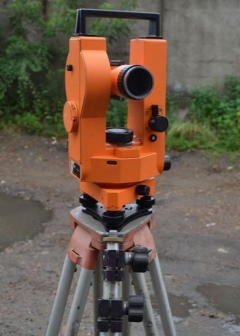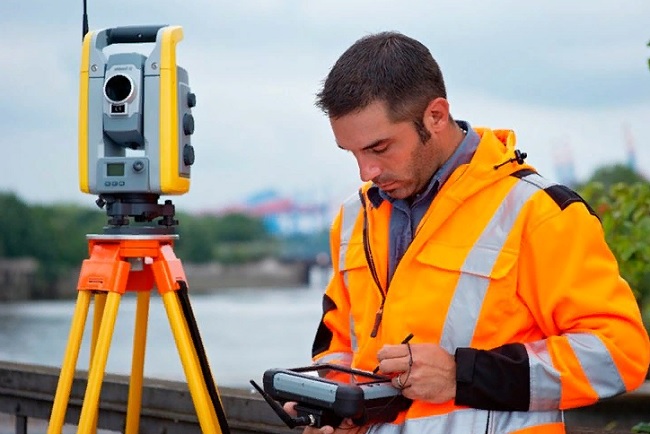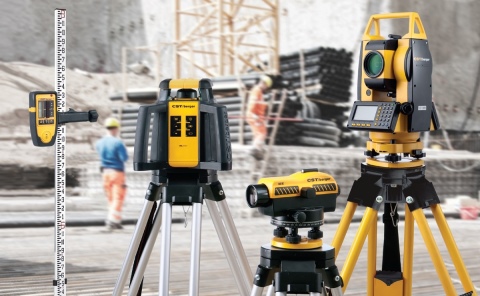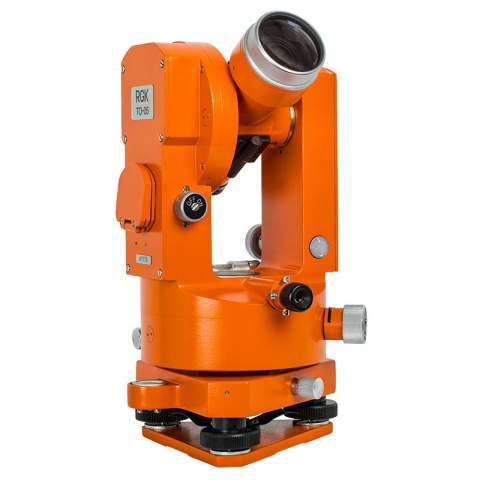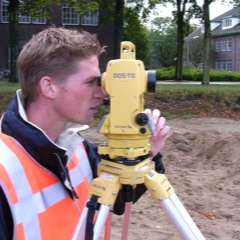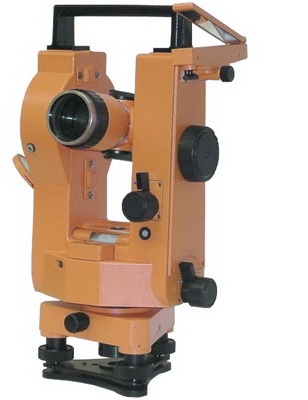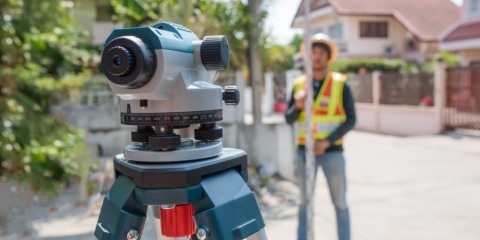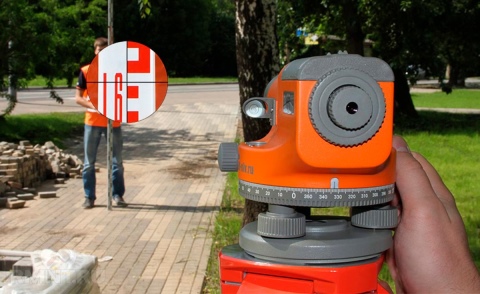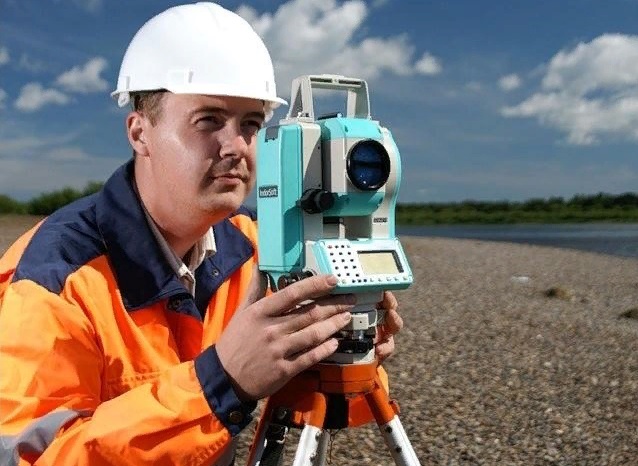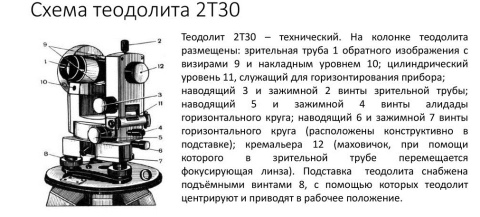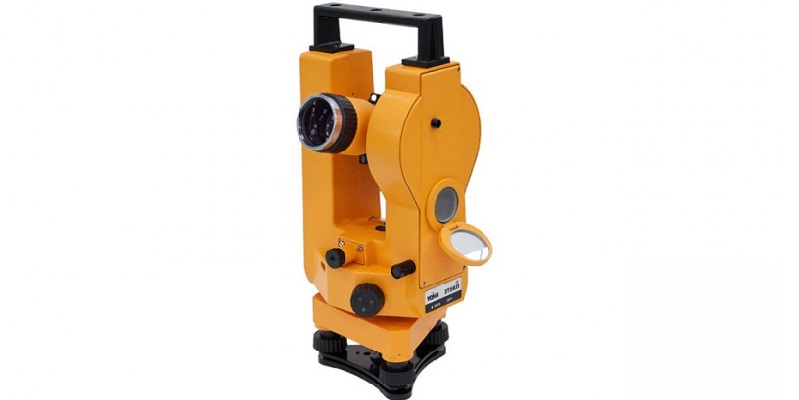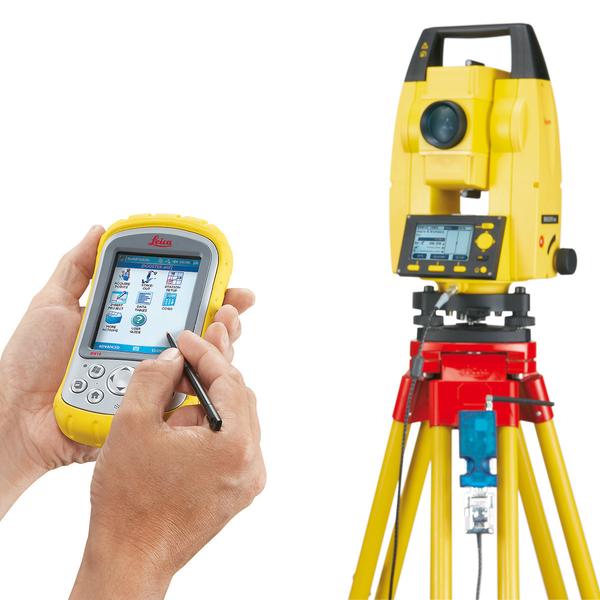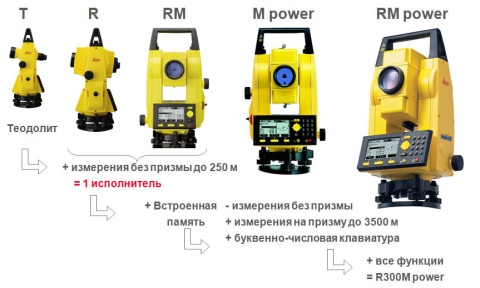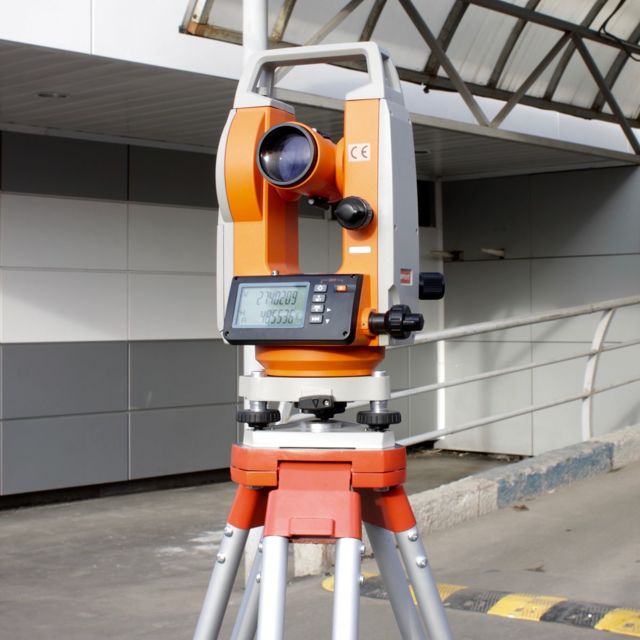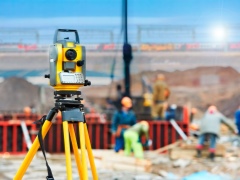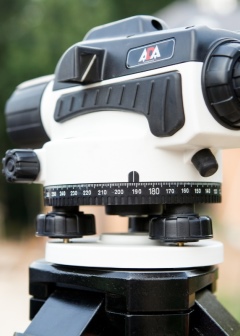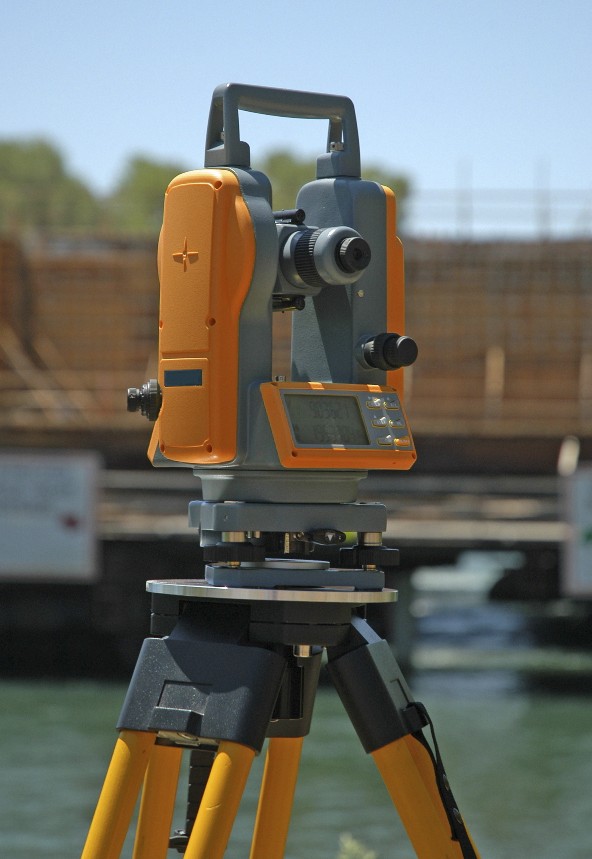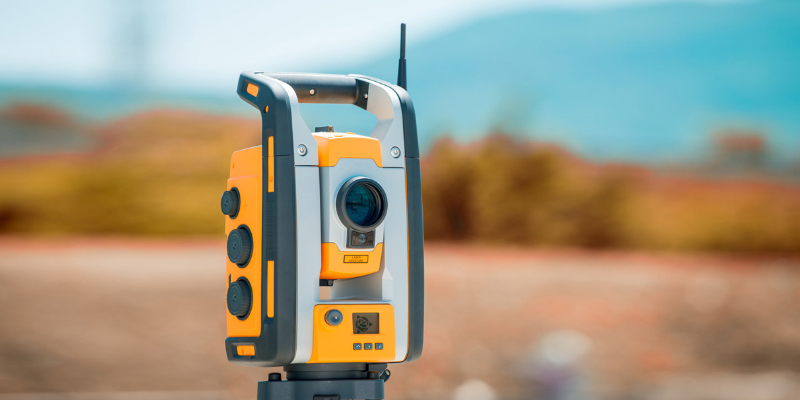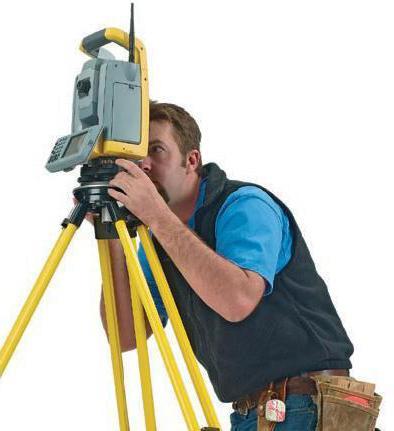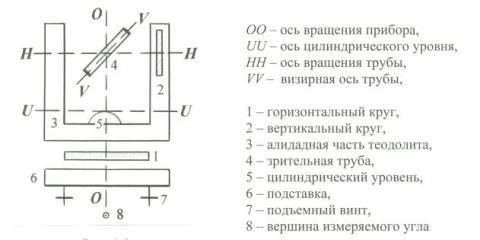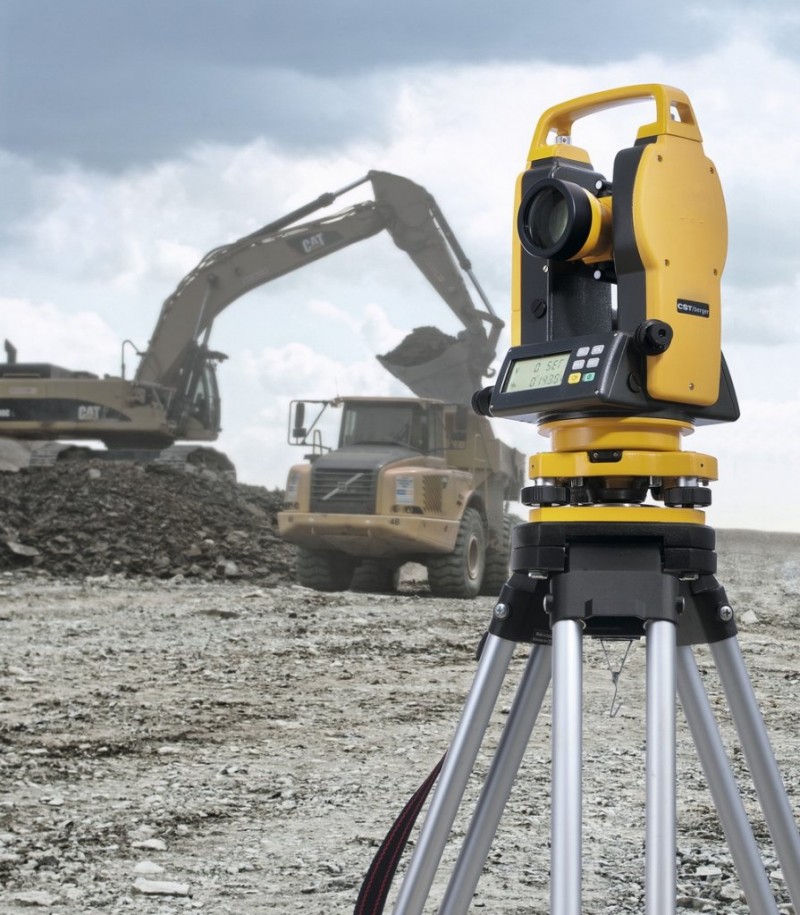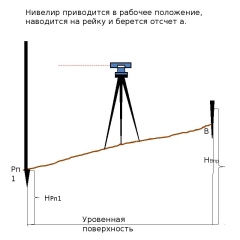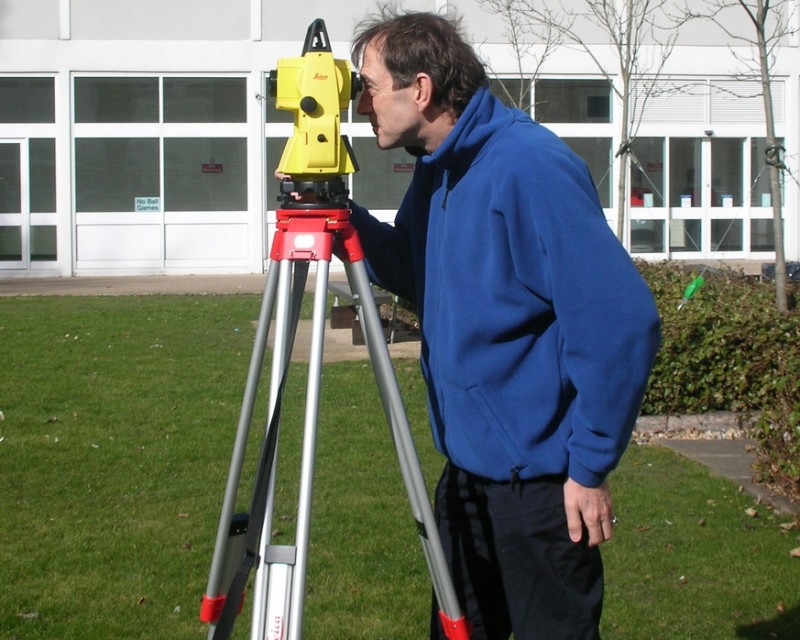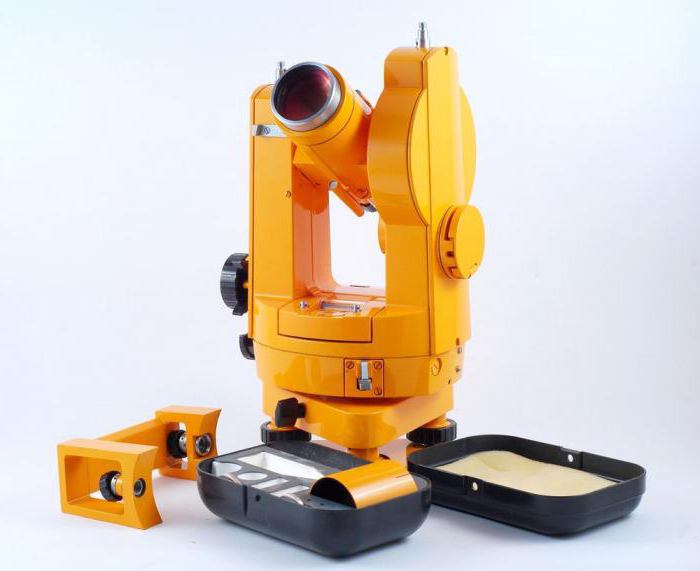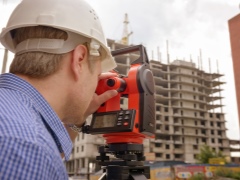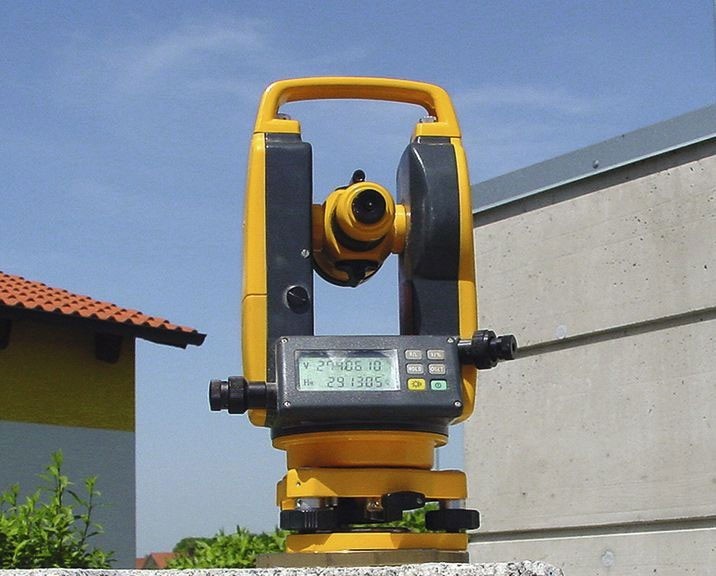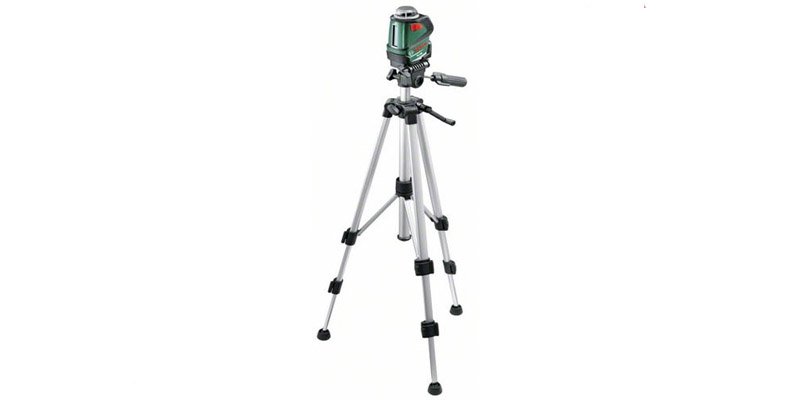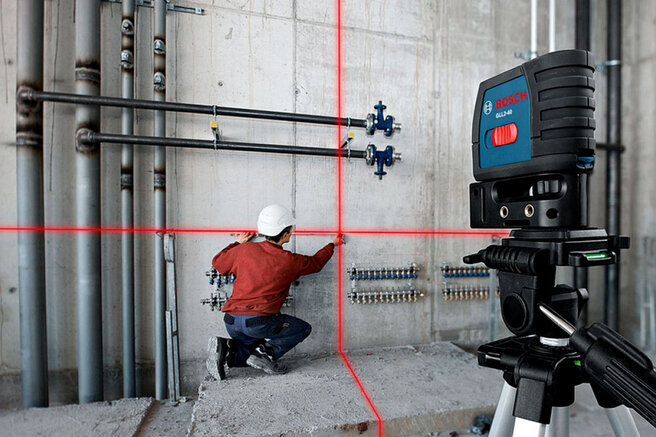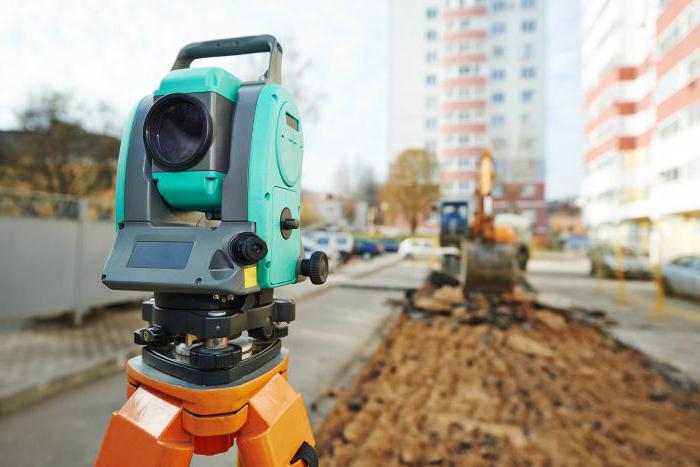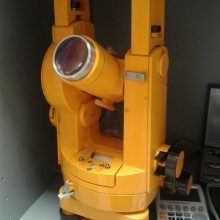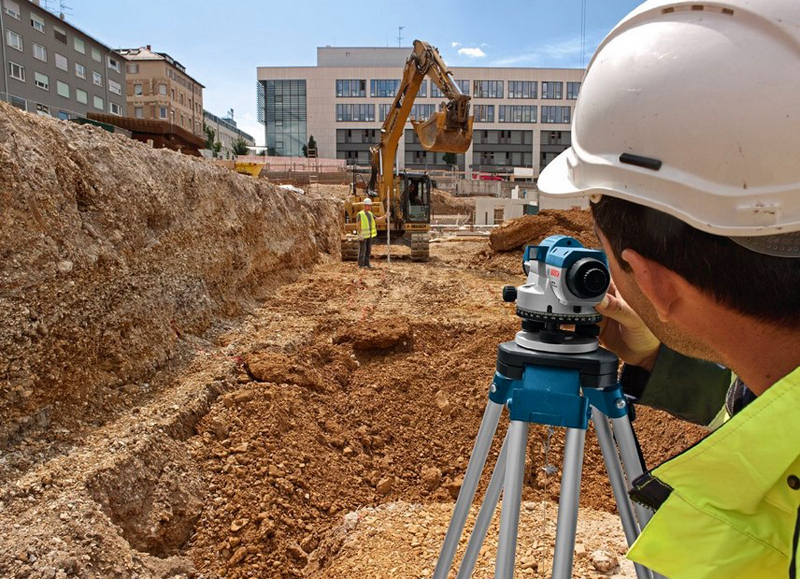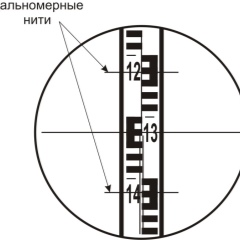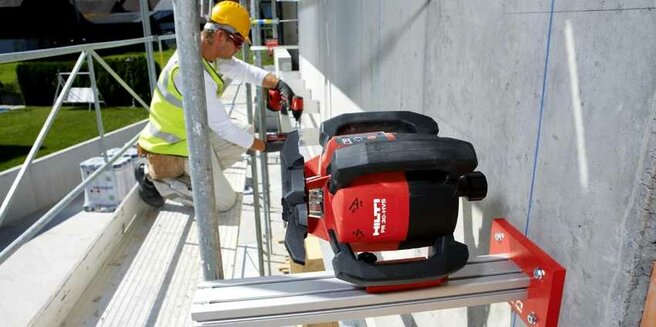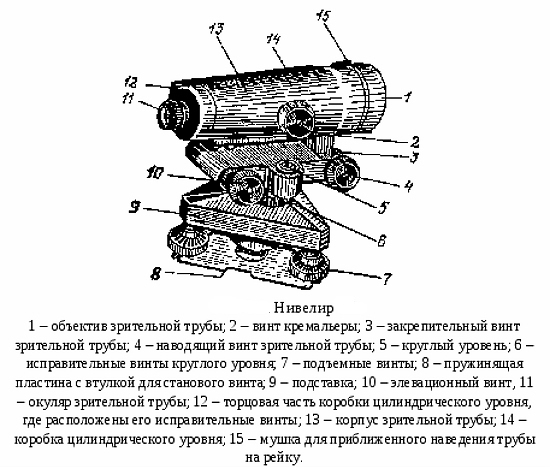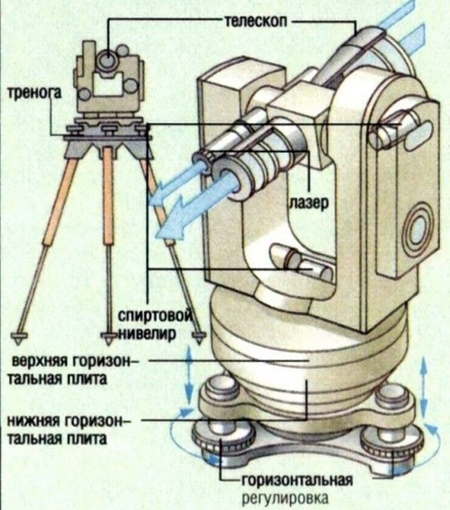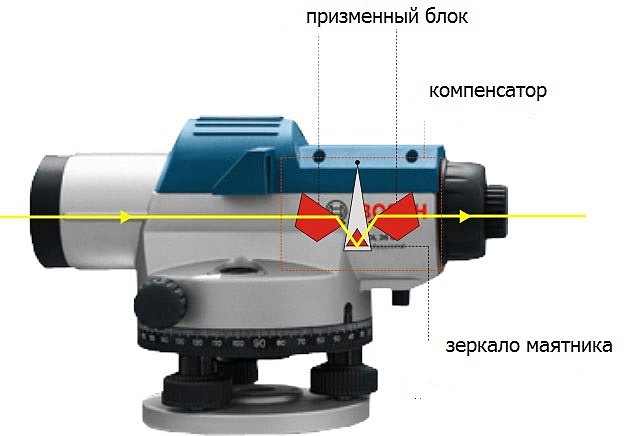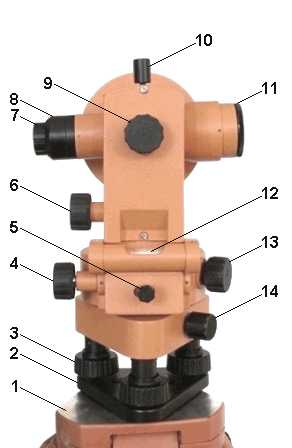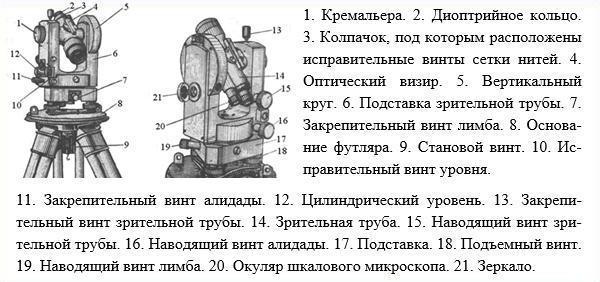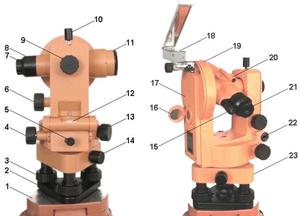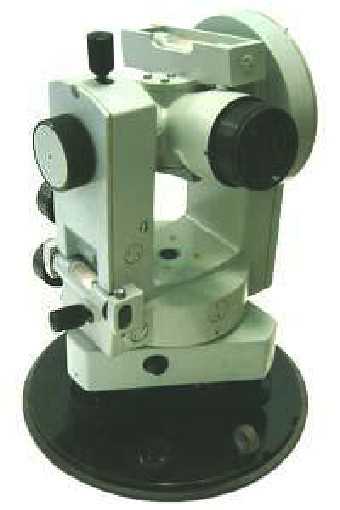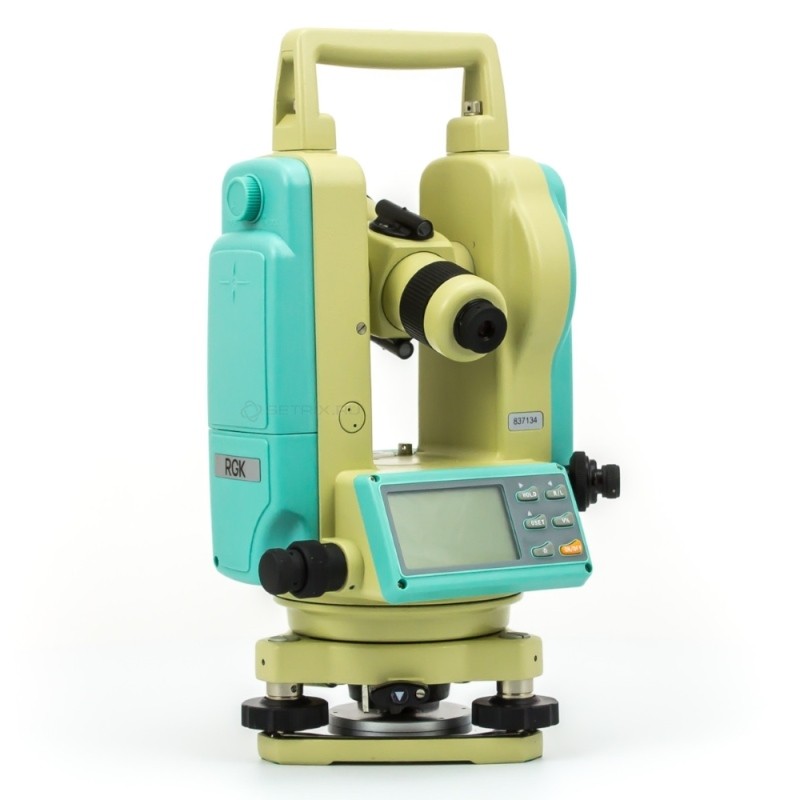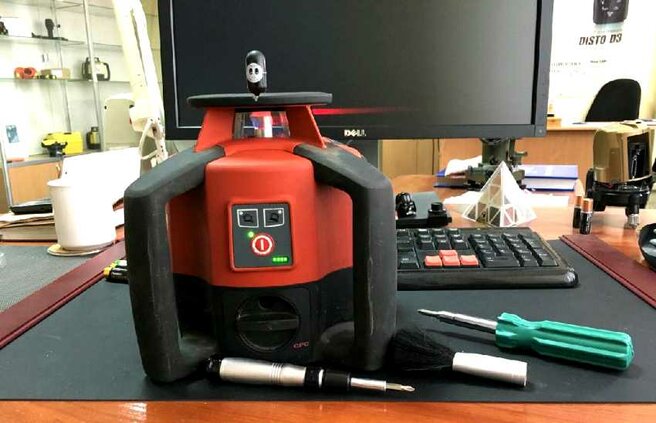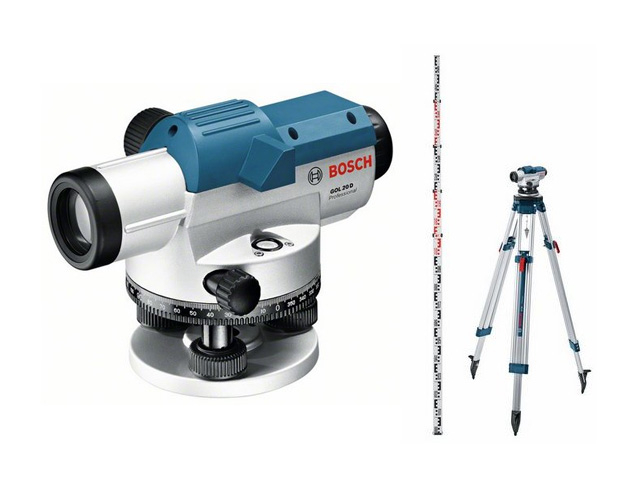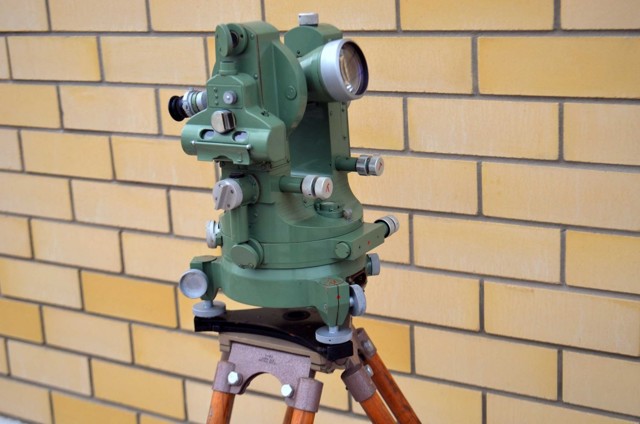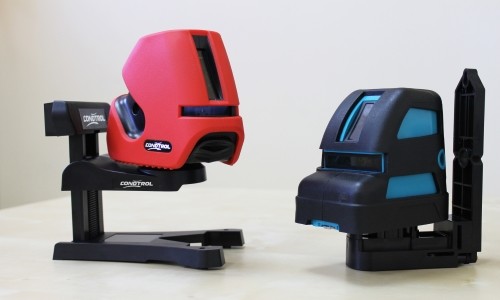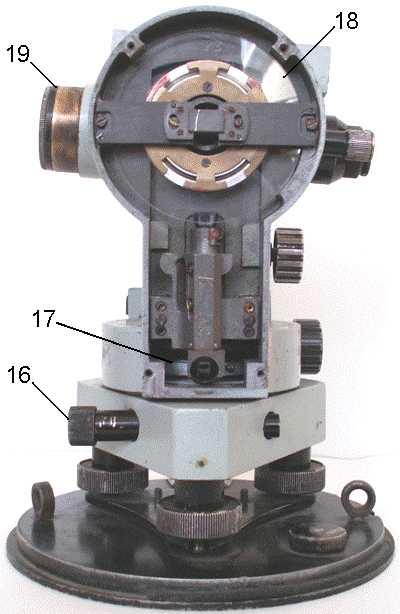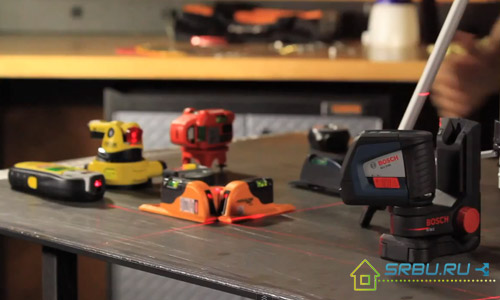Best Rotary Laser Levels
In the category of TOP tools, the leaders are the German brand Bosch with the GRL 300 HVG Set and the American DeWalt DW 079 PKH. These are laser levels, the rating of which is confirmed by their functionality and quality, and they are approximately equal for both devices. The only exceptions are some "goodies", the taste of which will determine the choice of the end customer.
| Bosch GRL 300 HVG Set | DeWALT DW 079 PKH | |
| Alignment type | automatic | automatic |
| Disable alignment | ||
| Self-leveling angle, degrees | +/- 5 | +/- 5 |
| Measuring range, with / without receiver | 150 / 50 | 300 / 30 |
| Tripod thread, inch | 5/8 | 5/8 |
| Beam color | green | Red |
| Accuracy, mm / m | +/- 0,1 | +/- 0,1 |
| Beam direction | horizontal / vertical | horizontal / vretical |
| Number of beams, pcs. | 2 | |
| Laser class | 3 | 3R |
| Wavelength, mm | 532 | 635 |
Bosch GRL 300 HVG Set
Professional level for work in open space and indoors. The range determined by the manufacturer is 50 meters in normal mode and 150 meters with laser beam receiver, which is included in the package.
The color of the laser beam is green - according to the manufacturer, its visibility is 4 times better than that of red. The number of beams is 2 - one forms the plane, and the second shows the zenith point. The auto-alignment function works when the device position is skewed within 5 °. Disconnection is not provided, but the device can operate in horizontal and vertical planes.
+ Pros of Bosch GRL 300 HVG Set
- the package includes all the necessary tools - a remote control, a universal holder, a battery and batteries, glasses and a laser receiver;
- long range of action;
- the laser can rotate in a circle, creating a 360 ° plane or move back and forth along one or adjacent walls (scan mode);
- powered by a rechargeable battery or batteries - the ability to work from the network;
- rubberized protection of the case ensures operation in dusty and high humidity conditions.
- Cons Bosch GRL 300 HVG Set
- the range of the remote control is about 30 meters - if measurements are taken at long distances, then it is necessary to involve assistants;
DeWALT DW 079 PKH
Self-leveling level with the highest possible performance for a device of this class. The laser of the device is automatically leveled with an error in the installation of the housing +/- 5 °, and the accuracy of the device declared by the manufacturer is 1 cm per 100 meters.
The work uses two beams - one rotating in the horizontal plane, and the second shows the zenith point to it. The manufacturer's declared range is 30 meters in normal mode and 300 using a beam receiver.
+ Pros of DeWALT DW 079 PKH
- functional and stable tripod;
- manual setting of the scanning range - if measurements are needed on a line of a certain length, the point will move only within the specified range;
- the ability to build planes at an angle;
- high-quality battery and charger;
- when building a vertical plane, the level can be placed close to the wall.
- Cons of DeWALT DW 079 PKH
- the signal receiver from the remote control is not located on the top of the case - remote control is not possible from all sides of the construction site;
- red ray - not as clearly visible in the sun as green.
Functional features
As mentioned above, the level has a lot of functions, especially when it comes to the rotary model. The level itself rotates in a plane, and at the same time has a single point of support, and then from 2 to 4 points along the entire circumference in the area of \ u200b \ u200bthe beam. Thus, it is customary to distinguish between point levels that can project both 3 points and 5 points in different directions.
The laser level, on the contrary, does not have its own point of support, but only two along the length of the projected beam, which start and end it, respectively. The level can project horizontal, vertical or both lines at the same time.What comes out of the above? Both devices are classified as measuring instruments. The difference is simply colossal, but, in fact, the level itself can become a logical, and quite functional, replacement for a laser level.
Device
The theodolite design consists of basic parts, which have become more complex with the development of technology, equipping it with a large number of functions. Instrument structure:
- Metal tripod with adjustable tripod and stand;
- Center plumb line and bubble cylindrical level for level installation of the device on the base (tribrach);
- Three leveling lifting screws of the tribrach for leveling the instrument;
- Alidadu - the upper rotating part of the device, on which the movable telescope and the reading mechanism are located;
- Alidada screws - guiding and fixing;
- Vertical and horizontal (limb) circles marked by angular degrees;
- Horizontal circle screws: guiding and fixing;
- A tube with a guide and fixing screws for adjusting the sharpness of the image, an eyepiece from the side of the beholder and a lens facing the object of observation;
- Eyepiece: lenses with a grid (collimation plane) are installed in it and in the objective; or sensors laser (electronic system);
- Cremalier - screw element for focusing the image in the eyepiece;
- Supports for the axis of vertical rotation of the tube;
- The reading device is an optical microscope (with a special sight, a scale or line lens and a special mirror or an autonomous light source for reading readings).

The main parts of a modern theodolite are alidada, telescope, limb or horizontal circle, stands, cylindrical level, leveling screws, and vertical circle.
Theodolite telescope device: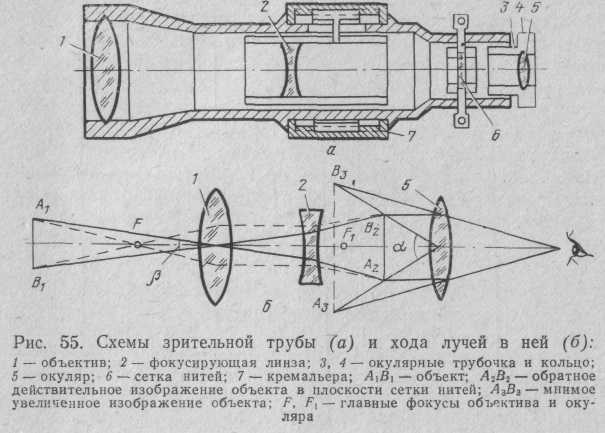
Horizontal circle

A horizontal circle, or limb, is a glass ring with dashed angular numerical values (degrees, minutes, sometimes seconds) applied to it.
The scale is a full circle from 0 to 359 degrees.
The limb pitch depends on the accuracy of the theodolite.
Limb and alidada
The entire upper structural part of the theodolite is called alidad. It is fixed on the axis directly above the limb and allows the structure to rotate in the horizontal plane.
The alidada includes columnar supports: on one of them there is a vertical measuring circle, and in the other a microscope of the reading device is mounted, with which you can accurately determine the angle set by turning the alidade around the circumference of the limb. Between the supports is a tube cylinder movable in the vertical plane. Alidada and limb are sealed with metal or high-strength plastic enclosures to protect against contamination and deformation.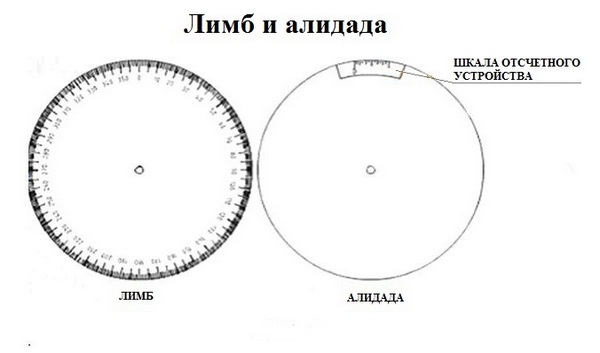
The alidad, the tube and the limb are the leading moving elements of the device. Alidada sets the reference relative to the points of interest, after which, to fix the coordinate system, the limb ring rotates and is fixed with screws relative to the points of interest.
In the video you can see about the purpose and device of the theodolite:
What is a plane builder?
The plane builder is a complex electronic device that indicates a horizontal or vertical level with laser beams. The functional component of the plane builder consists of a compensator (also called an electronic pendulum), which automatically brings the device to a state of equilibrium, regardless of the base on which it is located, and a laser emitter, with the help of beams of red indicating the required plane. A cylindrical prism is fixed inside the laser emitter, which converts the laser beam passing through it into a plane line.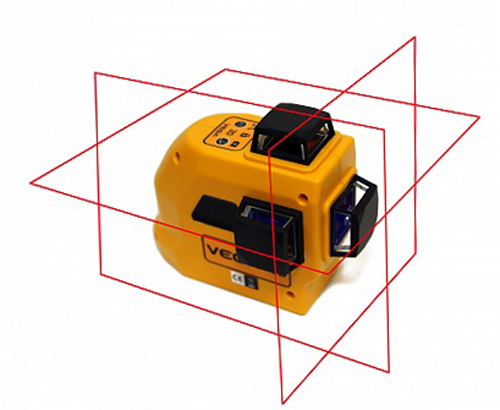
The indicators of the error in the operation of modern laser constructors are maximum: the maximum deviation is 1 mm per 1 m.Although many designers are skeptical about such indicators, an alternative has not yet been invented, and the available accuracy, according to the experience of building both residential and industrial buildings, is sufficient to create a state of balance and the necessary structural stability.
The laser plane builder will help to create almost all the basic geometric elements necessary for construction: points, lines, angles, planes and the so-called "laser cross", formed by perpendicular intersection of planes and is very convenient to use when working with interior decoration. Most of the builders are used as household, they are easy to install and operate. The beam length for indoor use can reach 30-50 m.
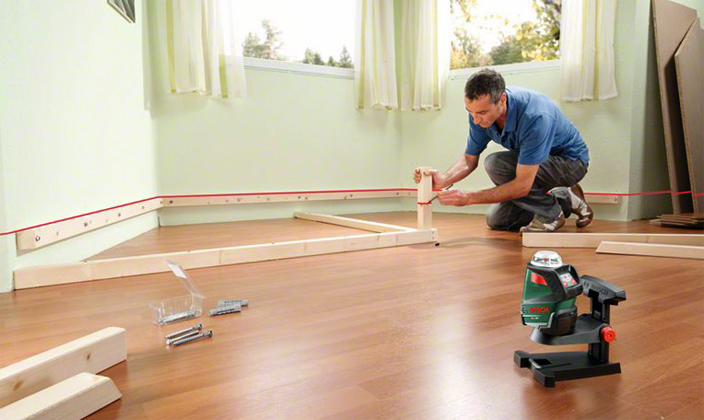
Using the plane builder
Level VS theodolite: similarities and differences
by echomeadmin
As soon as humanity came to the realization that the time of living in caves is coming to an end and the era of great construction begins, the need for different dimensions arose. From the simplest and most primitive measuring instruments, construction evolution has steadily moved forward for many centuries, coming to modern and constantly improving high-precision instruments and devices.
The need to carry out measurements of completely different directions has created large groups of measuring instruments, different in both the functionality performed and the design. For construction and repair and domestic work, geodetic multidisciplinary instruments are in the first place, each of which performs its own, sometimes very wide range of functions.
The most common among amateur and professional craftsmen are the level and theodolite, which have both common properties and significant differences. Both the one and the other surveying device, having certain differences in functionality, are used to solve similar problems, which often causes confusion among end users. So what is the difference between a theodolite and a level?
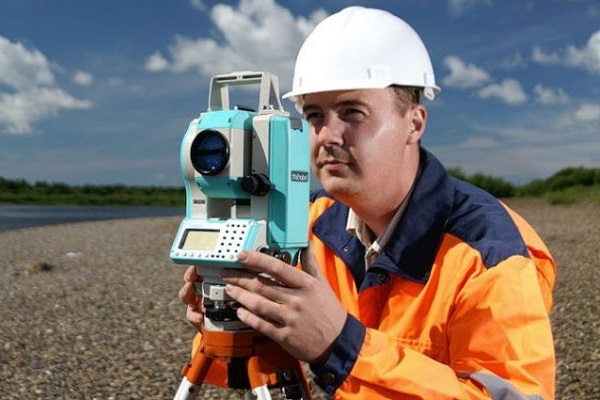
Some basics
The first of the considered geodetic instruments, widely used in construction work, the level is designed to determine the excess of heights of several points at the level of the horizontal - leveling. Pouring the foundation or the level of a clean floor, laying brick or block walls, gluing wallpaper, laying tiles and ceramic tiles are some of the few situations for which the leveling of horizontal and vertical guides is used to successfully solve.
The theodolite, in addition to the same horizontal and vertical linear measurements, makes it possible to perform horizontal / vertical angular measurements - for example, monitoring the deviation from the vertical of the wall and determining the deformation of buildings, marking the profile of the road surface, etc.
Same family, but different
The first and significant difference between these two devices will be the wider use and versatility of the theodolite: allowing more linear and angular measurements, the theodolite is most preferable for versatile work and construction projects. The level has a narrower specialization, somewhat limiting the scope of its use.
Structural differences also look quite natural for different functions performed:
- the key components of the level are the sighting tube and the cylindrical level;
- theodolite consists of a limb and an alidade, forming a horizontal circle, and a vertical circle (vertical limb). The two-channel system of reference of the instrument is based on the use of a microscope with a certain division value, the additional (angular) measurement axis is the main difference between theodolite and the level.
A fundamentally different design also entails the features of use:
- to determine the distance to the desired point on the surface using a level, it is additionally necessary to use a leveling rod (for an optical type of devices);
- the theodolite is completely self-sufficient: the angle of direction is measured along the horizontal limb, and the angle of inclination is determined along the vertical circle fixed on the horizontal axis of the pipe.
- any type of theodolite can be used on two levels - horizontal and vertical, while a level - only on the horizontal.
- Both levels and theodolites can be both optical and laser. Both types of devices, thanks to the telescopes, provide a reverse image.
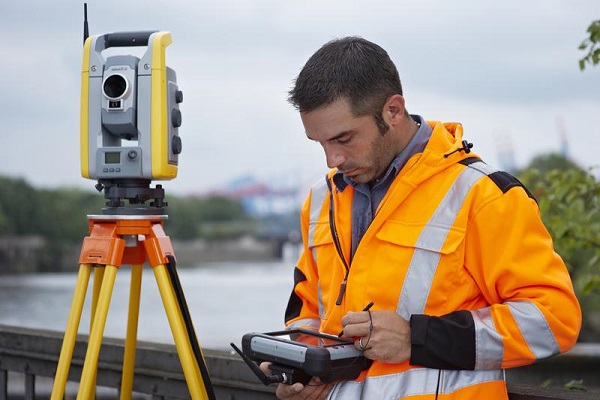
Taking into account the distinctive features of the level from the theodolite, for carrying out complex geodetic and repair and construction works, it would be convenient to have both instruments for certain measurement conditions. When choosing between them, as the only one, one should take into account the specific tasks that are supposed to be performed.
How optical and laser levels work
Optical or prismatic levels are used by professionals most often. They are a device that consists of a main unit and a stand (trigger). Consider what elements it consists of.
The main elements of an optical level
The main part of the device is an optical tube with a lens system. They are able to bring objects closer with a magnification of twenty times or more. In optical levels, all actions are carried out manually: fixing the position, aligning, adjusting the focus of the eyepiece, adjusting the position of the telescope. Level detection devices are built into the tool body. We will talk in more detail about working with the device in the next section of our article. According to the accuracy class, optical devices are divided into three groups. This marking is taken as the basis for the production and determination of the accuracy class:
- Technical devices. They are marked H-10, H-12, etc.
- Precise devices. They are marked from H-3 to H-9.
- Highly accurate devices. They are marked from H-0.5 to H-2.5.
The numbers in the markings indicate measurement errors in mm / km. Consequently, even technical equipment will give a deviation of approximately 1 cm per 1 km of distance to the object. This will be enough to carry out the correct planning for most construction work.
optical level
Option for projecting the beams of a laser level: zero mark (parallel to the floor) and building beams in two planes
If we talk about more modern laser models, then the main element in devices of this type is the LED emitter. The light beam that the device creates can project onto a plane. Depending on the model, the device can project the laser beam horizontally and vertically, along the perimeter, or in 360 ° crossing lines.
By purpose and design features, laser levels can be:
- Rotary. Such devices are equipped with special servo motors. The laser head rotates at 600 rpm. Due to this, it becomes possible to project rays at 360 °. If necessary, the speed can be changed in order to achieve greater clarity of the rays. This type of leveling will be indispensable when performing interior or exterior decoration of rooms, as well as when installing PVC windows.
- Projection. The device can project lines in several planes at the same time. Due to the fact that such a beam is poorly visible in daylight, such models are more often used indoors. The projection range of such devices usually does not exceed 35 meters.
- Point. Its peculiarity lies in the fact that only points are projected onto the surface. In this case, the laser moves in a vertical and horizontal plane, which facilitates measurements and helps to align surfaces on the ceiling and walls.
- Linear.They are somewhat reminiscent of an ordinary flashlight. When you turn it on, a perfectly visible beam line appears, in accordance with which you can quickly and easily make marks.
- Combined. Such devices are able to build up to six types of lines: vertical, inclined, down, up, right and left lines. In this case, the laser works both linearly and pointwise.
- Plane. They are also called plane builders. Professional surveyors use it in their work. Using this device, you can determine the zenith and nadir points on the surface, project lines diagonally, vertically, horizontally, and also determine the difference in heights of various objects.
laser level
What is a level and its main features
A level is a measuring device that is used by engineers and builders to determine the heights of various points on a plane. The main task of this device is to build a stable horizontal line, with the help of which geometric deviations of objects are determined.
The main task of the level is to build a stable horizontal line.
Working with a level requires an understanding of its principle of operation. If you look into the eyepiece of a modern device, you will notice that it superimposes a pattern of lines on the image of an object. This system is called a reticle. The projected lines are located not only in the horizontal plane, but also vertically.
The most technologically advanced and efficient are laser devices that project the lines of the reticle directly onto the desired object. The threads are drawn 360 ° to get the most accurate picture of the location of the points.
Bosch laser levels are very popular, which differ from other devices in the quality of components. When choosing a specific device, first of all, it is necessary to determine its purpose.
The most effective and technologically advanced are laser devices.
Level: This is a multi-purpose instrument used in construction
Such fixtures are very useful in construction, they are used for different tasks. Using this tool, you can organize the work of applying the facing material to any surface.
Levels are actively used for wallpapering. If you use this device, then the need for organizing skips disappears. The level should be set under the ceiling and the strips should be glued in accordance with the line shown by the measuring device. You can learn more about how to work with the level by watching videos on this topic.
This device is also used by experienced craftsmen during tiling. With its help, it is much easier to maintain straight lines, which determines the demand for this device in the construction environment. However, it should be said that for tiling the working surface with tiles, you will need a tool that cuts the beam into separate perpendicular beams.
The level is a versatile device that can be used for other tasks as well. Consider in what cases this device is used, in addition to the above:
Levels are used not only for the construction of buildings, but also during work on the interior decoration of premises.
- for finishing stair flights;
- installation of various household appliances;
- assembly and installation of furniture.
Thus, the operational scope of the device is quite wide. Working with the level is not as difficult as it seems at first glance - it is enough to understand the principles of the device functioning.
Correct operation
Regardless of which model of theodolite, electronic or classical, is to be used, it is important to remember that this is a sensitive device of high accuracy that requires careful handling and correct operation.From point to point, it should be transported in a special box or case designed for a particular model, trying to prevent the device from shaking and falling from a height.
From point to point, it should be transported in a special box or case designed for a specific model, trying to prevent the device from shaking and falling from a height.
When rotating on axles or screws, mechanical parts of the structure should move freely, but should not be loose and, if necessary, should be tightly fixed during operation of the device.
It is also recommended to always carefully monitor the optical components - eyepieces and sighting devices must be protected from dust and dirt, and their deformation (chips, cracks, etc.)
Special attention is paid to the tripod - when placing, make sure that the tripod is stable, and that all legs and platform are firmly fixed
Additional devices and inventory
In addition to the device itself, for work we need the already mentioned tripod, as well as a special measuring rod, with graduations and numbers applied on it. The divisions are stripes of alternating black or red stripes 10 mm wide.
The numbers on the rail are in ten cm increments, and the value from zero to the end of the rail is in decimeters, while the numbers are expressed in two digits. So, 50 cm is designated as 05, the number 09 means 90 cm, the number 12 will indicate 120 cm, etc.
For convenience, five centimeter lines of each decimeter are also united by a vertical strip, so that the entire rail is marked with signs in the form of the letter "E", straight and mirror.
Old models of devices give an inverted image, and a special rail is required for them, with inverted numbers.
Leveling accessories
A passport is attached to the level, which must indicate the date of its last check and adjustment, or, as surveyors say, “verification”. Levels are checked at least once every three years, in special workshops, about which the next entry is made in the passport.
In addition to the passport, the leveling kit includes a key for maintenance and a soft flannel for cleaning the lenses and, of course, a protective case where it is stored. Models with a horizontal limb - goniometer are equipped with a plumb line for installation strictly at the desired point.
Important!
Protect the level from knocks and shocks, even when in a case. Modern devices are equipped with a special device that accurately adjusts horizontally, a strong push, which outwardly did not leave the slightest trace, can damage its delicate mechanism.
How to work as a theodolite
What is theodolite? This is primarily optics. Working with it is called theodolite survey. It includes a set of activities in the field, the result of which is the construction of a terrain plan in a contour form. Simply put, on flat areas, theodolite is used to adjust land management plans.
Shooting with a theodolite goes through two stages:
- Creation of a working geodetic survey. At this stage, theodolite lines are laid along the closed contour of the polygon (perimeter of the site). The result of the work done is to obtain the dimensions of all the lines of the plot and the exact angles between them.
- Measurement of the internal situation. The essence of the stage is to measure the diagonals inside the polygon.
Professional theodolite survey is carried out in the following sequence:
- Determination and fixation of control points, the choice of which depends on the terrain and the characteristics of the territory. It is permissible between points to have a distance of at least 100 meters and up to 400 meters, no more.
- Installation on the plane of the survey points of justification. In this case, boundary marks can be restored.
- Preparation of moves for measurements. At this stage, the lines are cleaned from overgrowth and other obstructing factors.
- Measurement of angles and lines by theodolite.
- Shooting diagonals (situations).
Features of the device level
This tool is used in construction, for example, for laying floors, pouring foundations, laying tiles and even wallpapering. You can get flat surfaces by constructing guides horizontally and vertically using a leveling tool. The structure of the simplest in design - an optical device - includes several structural elements that allow making the necessary measurements using this device.
The level consists of a telescope with an eyepiece. The pipe is fixed on the support with a whole system of screws, with the help of which the tool is also rotated horizontally. A mirror is fixed inside the pipe with damping parts.
The working position of the level is given by means of a screw. If you need to take a reference point, the horizontal movement of the device is carried out by the elevation screw.
The horizontal sighting axis is held by an automatic compensator. It allows you to increase the accuracy of measurements.
Using the level allows you to get the most accurate measurement results. The software allows you to quickly process the received data, and the storage device allows you to record measurements.
At the moment, there are 3 main types of levels that are used for different types of work:
- laser;
- electronic (digital);
- optical.
Each of the types of this device has its own design features that affect the popularity of the devices.
Laser level device
Now in construction, laser levels are common, since these tools are the easiest to use. The design feature of such a device is the presence of a laser emitter. With its help, a laser beam is fed into space through an optical prism.
The laser beams form 2 intersecting perpendicular planes in space. Focusing on them, you can easily level the surface.
Laser devices can be rotary. Their difference lies in the fact that such a device has an electric motor, which allows it to work faster and rotate the emitter 360º.
In laser devices, instead of a prism, a lens is used, which creates a point in space visible to the naked eye. This point turns into a straight line, which can be guided by during repairs or wallpapering.
Conclusion
The most effective geodetic instruments are electronic instruments equipped with a GPS system. What is a theodolite with navigation? It allows you to quickly and accurately lay routes between measured points. And tie them to real-life topographic maps of the area.
In field archaeological practice, a level and a theodolite are used - instruments with telescopes that give a reverse image. In the eyepiece of the telescope, a reticule is visible, sometimes very complex. Horizontal and vertical threads located in diameter are used for sighting; two horizontal threads located at a certain and equal distance from the horizontal thread of a simple cross are rangefinder. Besides, in; In the telescopes, there are four other types of nets of filaments. The straight line connecting the intersection of the reticle with the optical center of the lens is called the sighting axis of the tube. In the manufacture of the device, the plane of the sighting axis is set perpendicular to its main vertical axis. Thus, during the operation of the device, if the main vertical axis is set exactly, for any rotation of the telescope fixed in the zero position, its sighting axis should lie in the horizontal plane. This is the main property of the level, the pipe of which has no position other than zero.
The theodolite tripod must be centered when setting up.To do this, a plumb line is attached to the mounting screw and the tripod is set so that the plumb line is near the center of the peg marking the point of the theodolite. The adjustment is first made by sliding or spreading the legs of the tripod, then the rams are fixed and more accurate adjustment is made by pressing the ledge of the desired leg with your foot.
Set the level tripod by eye, without a plumb line. At the same time, they make sure that its head is in a more or less horizontal position.
After installing the tripod, remove the theodolite or level from the box, put it with the ends of the lifting screws in special recesses on the tripod head, unscrew the lifting screws to the same height and fix the device on the tripod with a mounting screw.
Further installation of the level and theodolite consists in bringing the main vertical axis of the device to a vertical position, which is achieved using lifting screws and levels.
When installing the level, first by pressing on the protrusions of the tripod legs, the round level is brought to the central position, and then the telescope is turned parallel to the line of the two lifting screws and, rotating them simultaneously in different directions, the bubble of the level attached to the telescope is brought to the middle position. Then, turning the pipe parallel to the line of the other two screws, the level is again brought to the middle position. The device is considered installed if at any turn of the telescope the bubble of its level does not leave this position.
In geodesy, along with levels, devices such as theodolites are often used. With their help, during general construction work, specialists measure horizontal and vertical angles.
The device is based on a sighting tube, as well as reference circles (horizontal and vertical). The pipe has a certain magnification factor and works on the principle of a spyglass. It is mounted on two columns, which, in turn, are fixed on a special base. It is installed on a stand called a tribrach.

